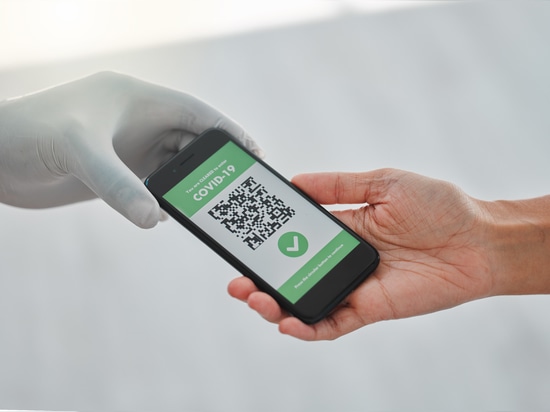
#Industry News
5 Key Benefits of Using Digital Insurance Cards for Your Healthcare Needs
Why digital is best for both patient and hospitals
The modern world seems to be all digital. Need to pass the TSA checkpoint at the airport? Tap your smartphone containing your digital ID on the scanner to check in. Are you eyeing that new or used SUV at the dealership and want more information? Scan the QR code taped on its window with your phone to get the most current information.
The healthcare sector, on the other hand, continues to rely on non-digital, or "analog," methods. Patients are often required to present physical copies of their health insurance or Medicaid cards for check-ins and refills, leading to inconvenience and inefficiency. This reliance on physical proof burdens medical offices with tasks such as making copies, managing outdated information, and correcting errors.
So the healthcare industry is turning to digital insurance cards to deal with this inconvenience for both sides. Today's post covers what these cards are and five of their benefits.
Health Insurance Cards vs Digital Insurance Cards
Many health insurance providers claim to provide their insured digital insurance cards. In reality, they're simply referring to images of the patient's health insurance cards. These images are displayed through the insurer's app and contain the following typical information:
Patient's name/identity
ID #
Family member's name (if primary policyholder)
Policy group/name
Policy number
Benefits
Coverage
Insurance company contact info
Plan types
Digital insurance cards provide information similar to virtual card copies. The crucial difference is that they are not a static image.
The digital insurance card usually displays a QR code. It contains all the above information and more. Medical staff simply use the QR scanner attached to their medical-grade computer to bring up patient information in their EMR system. The insured can also do the same at a patient kiosk at check-in.
There is no need to be online to access the patient's card information. Medical clinics and hospitals that are online, though, can always access the most current version of the patient's insurance, from policy number to contact info. This is possible even if the patient switches insurance.
This is not possibly with current static insurance cards which require a phone call to the get the latest updates. As Christopher Longhurst, CMO and chief digital officer at UC San Diego Health, puts it: "There are more than 1,000 health insurance companies in the United States, each with their own insurance card format," he said at the college's recent digital health symposium for the SMART health insurance card. "It takes weeks to train new staff members to decipher all those different card formats, and there are often typos, which can lead to rejected insurance claims. A common QR code format to scan will streamline the process, reduce errors, and simplify insurance documentation for our patients and staff."
The SMART health insurance card he’s referring to is the US' first attempt using the technology, and NDT UC San Diego Health was the first healthcare system to implement it on a trial basis.
Benefits of Digital Insurance Cards for Healthcare
The dynamic functionality of a digital insurance card, allowing it to continuously update and provide a patient's latest information, offers numerous advantages over a static digital ID image. Five such benefits include:
Reduce expense and environmental impact
Health insurers spend millions each year printing and mailing plastic and paper cards to their customers. These processes are also environmentally damaging, from the trees used to make the mailings to the burning of fossil fuels in their transportation. Digital insurance cards, whose link is sent via email or text, have no such impact on the environment and can go a long way in healthcare's green efforts.
Reduce administrative burden
Processing patient information manually is a costly affair. This includes everything from the labor involved to any errors in input. The wrong information can deny vital treatment or service to the patient or its payment by the insurance company.
Digital insurance cards help reduce costs by enabling the entry or update of information just once. This information can then be easily and accurately shared among healthcare providers, insurance companies, and other pertinent parties, leading to efficiency and cost savings.
Deliver insurance cards to customers faster
As mentioned previously, it can be a pain for patients to wait for new health insurance cards through the mail. Medical staff then have to update their records, which is time-consuming, with a possible chance for error.
Digital insurance cards, on the other hand, are delivered nearly instantaneously to patients via electronic means like email. Staff personnel scan the QR code into their medical computer or tablet to bring up and upload the latest information to their records.
Protect patient identity
Waiting for a new health insurance card through the mail is one of many disadvantages for patients. If their previous one was stolen, they become vulnerable to medical identity theft. The culprit could use the card to see a provider, fill prescriptions, or file a false claim, all under your name. They may trace family members if their names are on the card or your work history via your employer. Worse, you may only know all this is happening once you get a call or letter from a provider, insurer, or other involved party.
Digital insurance cards are inherently more secure than physical cards because the QR code is stored on your phone. Accessing the digital card requires logging into the app with your personal credentials, adding an extra layer of security. In the unlikely event that you suspect your health insurance details have been compromised, you can promptly access your information online to monitor any unauthorized activities in real time.
Advanced features
Digital insurance cards can store advance directives like Durable Power of Attorney. Family members and medical personnel can always be up-to-date on what to do if the patient cannot communicate about their health treatment. The patient's will can be brought up depending on the card's setup.
Lastly, pharmacies can display patients' most current prescriptions and even over-the-counter drug purchases. The pharmacist can reconcile medicines through various digital healthcare technologies to ensure no dangerous combinations.
Closing Thoughts
In today's modern digital world, traditional paper-and-plastic health insurance cards seem as outdated as manual typewriters in the age of computers. The healthcare industry is actively moving towards the adoption of digital insurance cards, replacing physical cards with QR codes that offer a multitude of advantages. These digital alternatives not only provide real-time access to important information but also enhance identity protection, paving the way for a more secure and efficient healthcare experience.
Is your medical group looking to start accepting digital insurance cards? Contact an expert at Cybernet! They can assist you in finding the right medical-grade PC or tablet to work with the QR code and other features.








